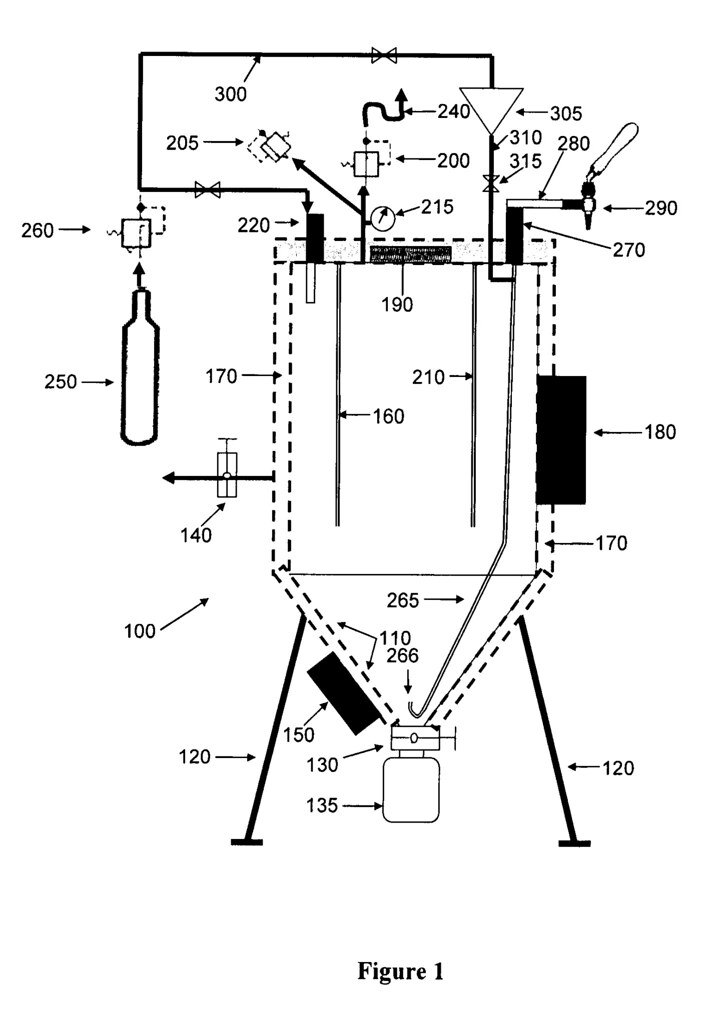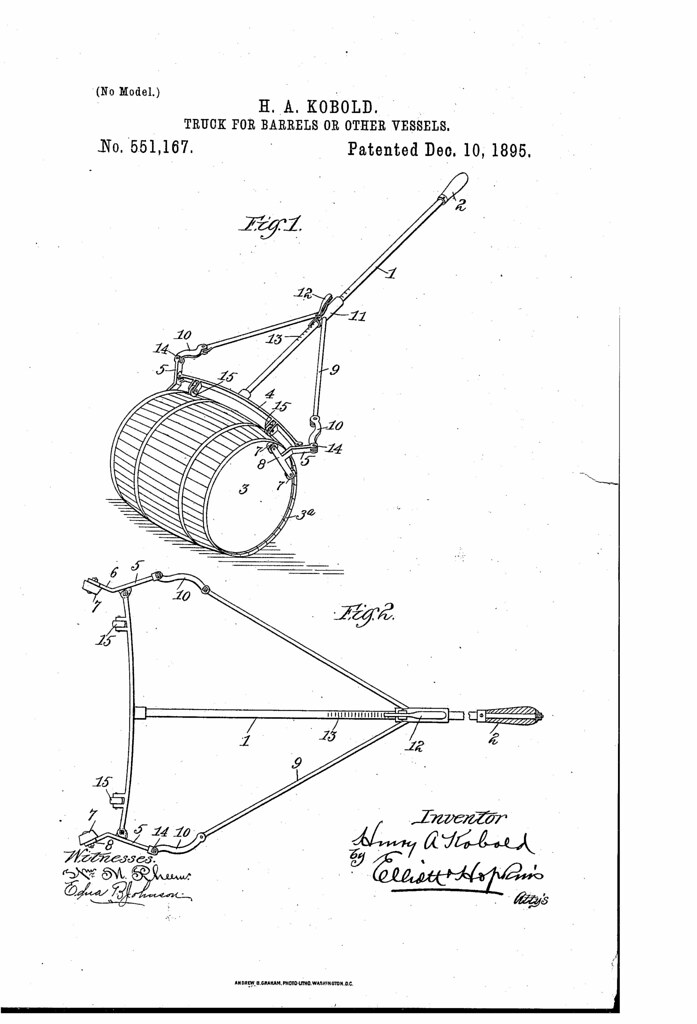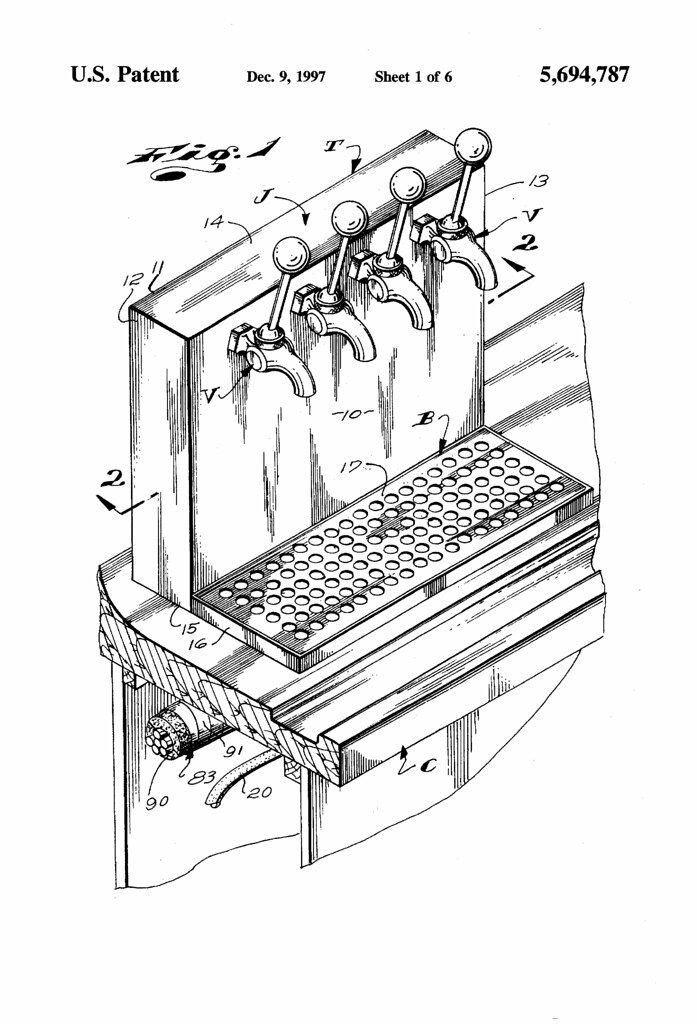
Today in 1892, US Patent 488144 A was issued, an invention of Wyatt Gibson, for his “Beer Cooler.” There’s no Abstract, although in the description it includes these claims:
This invention relates to improvements in beer-coolers, the objects in view being to pro- Vide a cheaply-constructed and simple cooling device for cooling beer or other liquids, to so arrange the parts as to permit of an easy handling of the keg containing the beer or other liquid, to permit of ready access to and separation of the parts for the purpose of cleaning the apparatus, and, furthermore, to adapt the same when not in use as a beer or other liquid cooler to serve as an efficient refrigerator or cold-storage chamber for domestic purposes.



 >
>
















